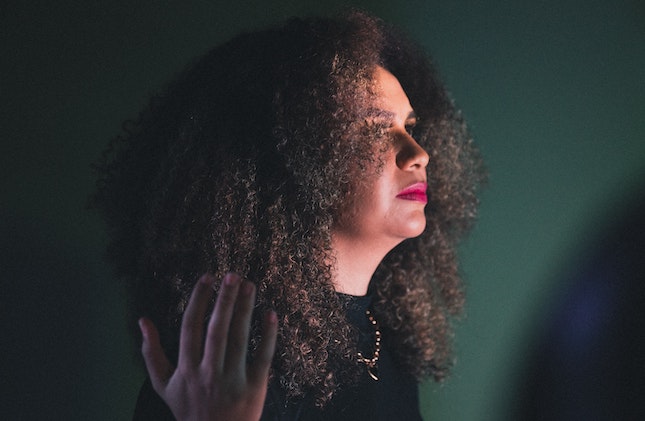Speak Up: The Art of Choosing a Narrative Voice That Will Captivate Your Readers

Choosing the right narrative voice for a mystery story is crucial for building suspense, creating intrigue, and engaging your readers. The narrative voice you choose can determine how the story is told, from the level of detail you provide to the pacing of the plot.
With so many options to choose from, it can be challenging to decide which voice is right for your story. Whether you’re a seasoned mystery writer or just getting started, my tips and strategies will help you create a captivating and suspenseful narrative that leaves your readers wanting more. Let’s dive in and discover how to choose a narrative voice that will take your mystery story to the next level.
What is Narrative Voice?
If you’re new to writing, the term “narrative voice” may seem confusing. Simply put, narrative voice refers to the perspective from which a story is told. It’s the voice that guides the reader through the story’s plot, characters, and events.
There are several different types of narrative voices to choose from, each with its own unique advantages and challenges. The most common types of narrative voice are first-person, second-person, and third-person.
First-person narrative voice is when the story is told from the perspective of one of the characters in the story. The reader experiences the events of the story through the eyes of this character, hearing their thoughts and feelings about what’s happening.
Second-person narrative voice is less common and addresses the reader directly, using “you” as the narrator. This type of voice can create a more immersive experience for the reader but can be challenging to sustain for an entire story.
Third-person narrative voice is the most common type of voice used in storytelling. It’s told from an outside perspective, using pronouns like “he” or “she” to describe the actions and thoughts of the characters. This type of voice can provide a more objective viewpoint, allowing the reader to see the story’s big picture.
Choosing the right narrative voice for your mystery story can make all the difference in creating a compelling and suspenseful tale that keeps your readers engaged until the very end.
How to Choose Your Narrative Voice
Now that you understand what narrative voice is let’s dive into how to choose the right one for your mystery story.
- Consider the story’s tone: The tone of your story will play a significant role in determining the narrative voice you choose. A first-person narrative voice may be the best option if your story is lighthearted and whimsical. A third-person narrative voice might be more suitable if your story is dark and mysterious.
- Think about your audience: Who is your target audience? What type of narrative voice will resonate with them? If you’re writing for a younger audience, a first-person narrative voice might be more engaging, whereas an older audience may prefer a third-person voice.
- Determine your level of involvement: How much do you want to be involved in the story? If you want to be deeply immersed in the story and take on the role of one of the characters, a first-person narrative voice may be the best option. If you prefer to observe the story objectively, a third-person narrative voice might be a better fit.
- Consider your character’s personality: If your story centers around one main character, consider their personality when choosing the narrative voice. For example, if your character is quirky and has a unique perspective on the world, a first-person narrative voice may be the best option to showcase their personality.
- Experiment: Don’t be afraid to experiment with different types of narrative voices to see what works best for your story. Try writing the same scene from different narrative perspectives to see which one creates the most suspense and intrigue.
Choosing the right voice for your mystery story’s narration is a very important choice that can greatly affect the reader’s experience. By considering the story’s tone, audience, your involvement, the character’s personality, and experimenting, you’ll find the perfect narrative voice to bring your mystery story to life.
The First-Person Perspective: Seeing Through One Point of View
The first-person perspective is a common narrative voice used in mystery stories, giving readers an inside look into the main character’s (your sleuth’s) thoughts and feelings. This point of view can create a more immersive experience for the reader, but it also has its limitations.
One of the best things about the first-person point of view is that it lets the reader see the story through the main character’s eyes. This can create a deeper connection between the reader and the protagonist, making the story feel more personal and relatable.
However, the first-person perspective also has its limitations. It provides the reader with a limited view of the story, only showing what the character sees and experiences. This can be a problem in mystery stories, where there are often many characters and twists in the plot that the main character may not know about.
Another problem with the first-person point of view is that it can be hard to keep up over the course of a whole book. The reader can only find out what one character thinks and feels, which can get boring or repetitive if not done well.
The first-person perspective can be a good way to tell a mystery story because it gives the reader a personal connection to the main character. But it has some problems, like not being able to see everything that happens in the story and becoming boring over time. As with any narrative voice, it’s essential to weigh the pros and cons and determine if the first-person perspective is the best fit for your story.
The Second-Person Perspective: Putting Yourself in the Story
The second-person perspective is a less common narrative voice in storytelling, but it can be a powerful way to create a more immersive experience for the reader. In this voice, the main character is called “you,” which puts the reader right into the story.
One advantage of the second-person perspective is that it can create a more immediate and personal connection between the reader and the protagonist. It can also be an effective way to create a sense of urgency or tension, as the reader is directly involved in the action.
But it can be hard to keep the second-person point of view going through an entire novel. It can become repetitive or even tedious as the reader is limited to one point of view throughout the entire story. It is also a less common way of telling a story, which can make it harder to do well.
Another problem with the second-person point of view is that it might not work as well for some types of stories, like ones with a complicated plot or a lot of characters. Because the reader can only see things from one point of view, it can be hard to give them all the information they need to fully understand the story.
The second-person perspective can be a powerful way to tell a story and make the reader feel more involved. However, it can be difficult to sustain over the course of an entire novel, and it is not the best fit for every story.
The Third-Person Perspective: A Classic Choice for Mystery Stories
Most mystery stories are told from the third-person point of view, which lets the reader look at the story from an unbiased point of view. In this narrative voice, the protagonist is referred to as “he” or “she,” and the reader can gain a wider perspective on the story.
One of the best things about the third-person point of view is that it can help the reader understand the story in a more complete way. It lets the author show off more characters and storylines, making the mystery more complex and interesting. It can also be an effective way to build suspense, as the reader is aware of more information than the protagonist.
The third-person perspective is also the most common narrative voice used in fiction, which can make it more accessible to readers. It’s a voice that many readers are used to, which makes it a great choice for writers who want to reach as many people as possible.
But the third-person perspective does have limitations. It can make the reader feel less connected to the main character, making it harder for them to feel like they know them. It can also be hard to keep a consistent narrative voice throughout a novel since the reader sees things from many different points of view.
The third-person perspective is a classic choice for mystery stories because it gives the reader a wider view and a better understanding of what’s going on. While it does have its limitations, it’s a popular narrative voice that many readers are comfortable with and can be an excellent choice for writers looking to appeal to a broad audience.
Adding Tone to Your Narrative Voice: Setting the Mood for Your Mystery Story
In addition to choosing the right narrative voice, adding tone to your writing can help set the mood and create a more engaging reading experience. Depending on the type of story you’re writing, the tone can be dark, witty, sarcastic, level-headed, or any combination of these.
Adding tone to your narrative voice is essential because it sets your story’s overall mood and atmosphere. It helps the reader connect with the characters and can create a more emotional response to the plot. Here are some ways to add tone to your narrative voice:
- Dark tone: A dark tone can create a sense of foreboding and suspense in your mystery story. Using descriptive language and metaphors can help convey a sense of danger and intrigue.
- Witty tone: A witty tone can add a lighthearted element to your mystery story, making it more entertaining for the reader. Using humor and sarcasm can help create a more relatable and engaging narrative voice.
- Sarcastic tone: A sarcastic tone can be used to add a layer of irony to your mystery story. It can create a sense of detachment from the events of the story, allowing the reader to view the events objectively.
- Level-headed tone: A level-headed tone can create a more objective perspective on the story. It can provide a more analytical approach to the events, helping the reader understand the story on a deeper level.
Adding tone to your narrative voice is a key part of making an interesting and compelling mystery story. Whether you choose a dark, witty, sarcastic, or level-headed tone, it’s important to stay consistent and use descriptive language to set the mood for your story. With the right narrative voice and tone, you can create a mystery story that keeps your readers on the edge of their seats.
Combining Voice and Tone: Crafting Your Unique Mystery Story
Choosing the right narrative voice and tone can make all the difference in creating a captivating and suspenseful mystery story. Your narrative voice determines the perspective from which the story is told, while the tone sets the mood and atmosphere of the story.
Whether you choose a first-person, second-person, or third-person perspective, adding the right tone can help create a unique and memorable reading experience. A dark tone can create fear and tension, while a witty or sarcastic tone can add humor and lightness to the story. A level-headed tone can give the reader a more objective view of the events, which can help them understand the story better.
Remember, there’s no one-size-fits-all approach to choosing the perfect narrative voice and tone for your mystery story. Experimenting with different combinations is essential to find what works best for your unique story. By considering your story’s tone, audience, character’s personality, level of involvement, and experimenting, you can craft a mystery story that keeps your readers guessing until the very end.
So, whether you’re a seasoned mystery writer or just getting started, take the time to choose the perfect narrative voice and tone for your story. You can make a unique and memorable mystery by putting these things together. Your readers will be eagerly waiting for your next book.
Get the basics from story idea to writing The End at Write A Killer Mystery.
Photo by christian buehner on Unsplash





